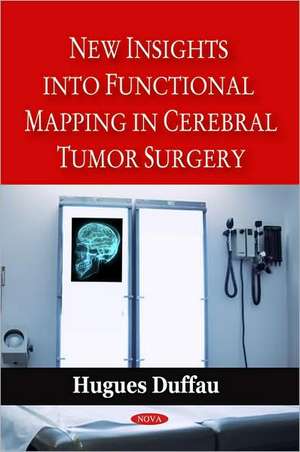New Insights into Functional Mapping in Cerebral Tumor Surgery
Autor Hugues Duffauen Limba Engleză Paperback – 15 mar 2009
Preț: 400.28 lei
Preț vechi: 421.34 lei
-5% Nou
Puncte Express: 600
Preț estimativ în valută:
76.60€ • 83.18$ • 64.35£
76.60€ • 83.18$ • 64.35£
Carte indisponibilă temporar
Doresc să fiu notificat când acest titlu va fi disponibil:
Se trimite...
Preluare comenzi: 021 569.72.76
Specificații
ISBN-13: 9781606921364
ISBN-10: 1606921363
Pagini: 95
Ilustrații: colour photos
Dimensiuni: 156 x 223 x 9 mm
Greutate: 0.18 kg
Ediția:New.
Editura: Nova Science Publishers Inc
ISBN-10: 1606921363
Pagini: 95
Ilustrații: colour photos
Dimensiuni: 156 x 223 x 9 mm
Greutate: 0.18 kg
Ediția:New.
Editura: Nova Science Publishers Inc
Cuprins
Preface; Introduction; Study of the Dynamic Biological Behavior of the Tumor; Study of the Dynamic Organisation of the Brain; Study of the Dynamic Interactions Between the Tumor and the Brain; Surgical Results; Conclusions and Perspectives; Index.
